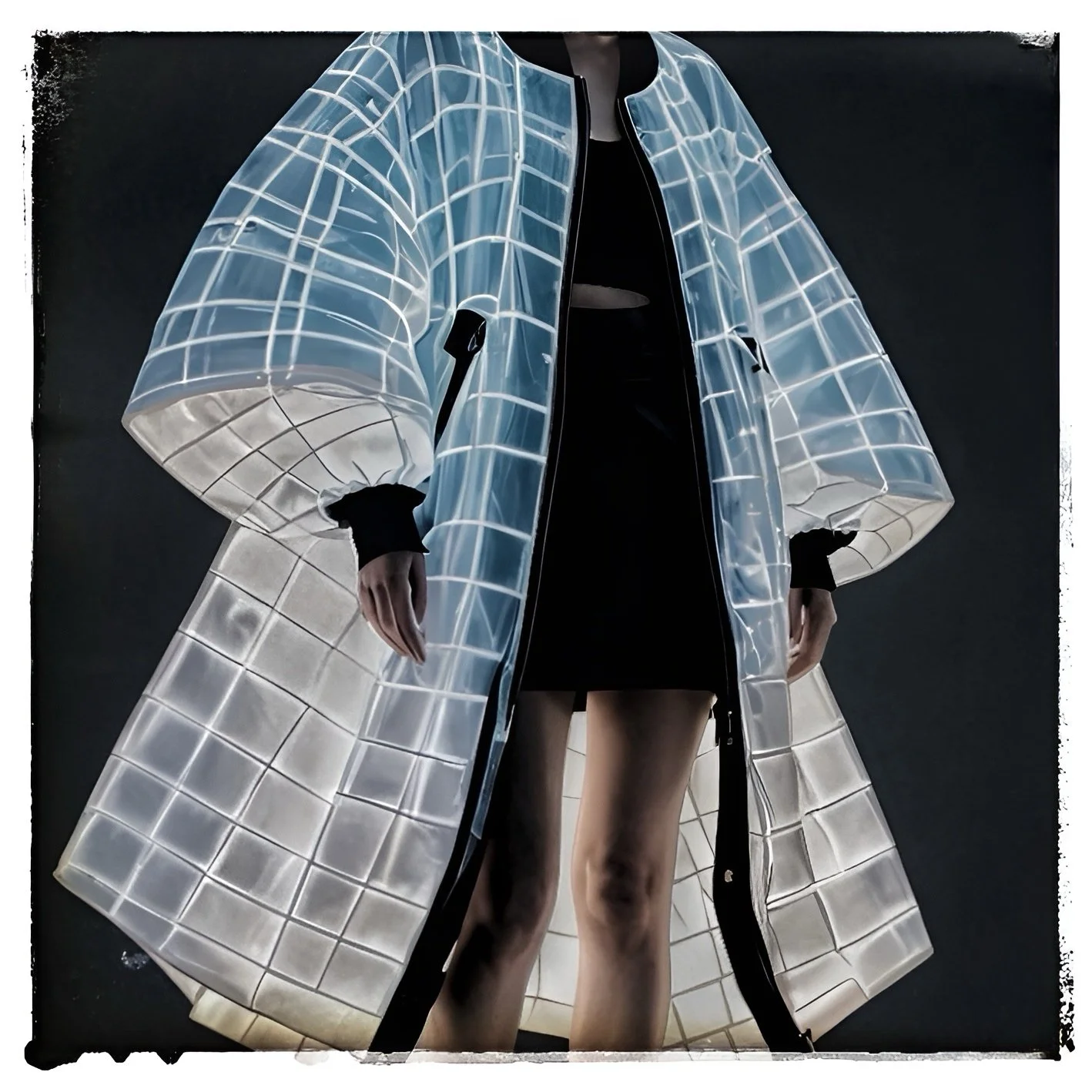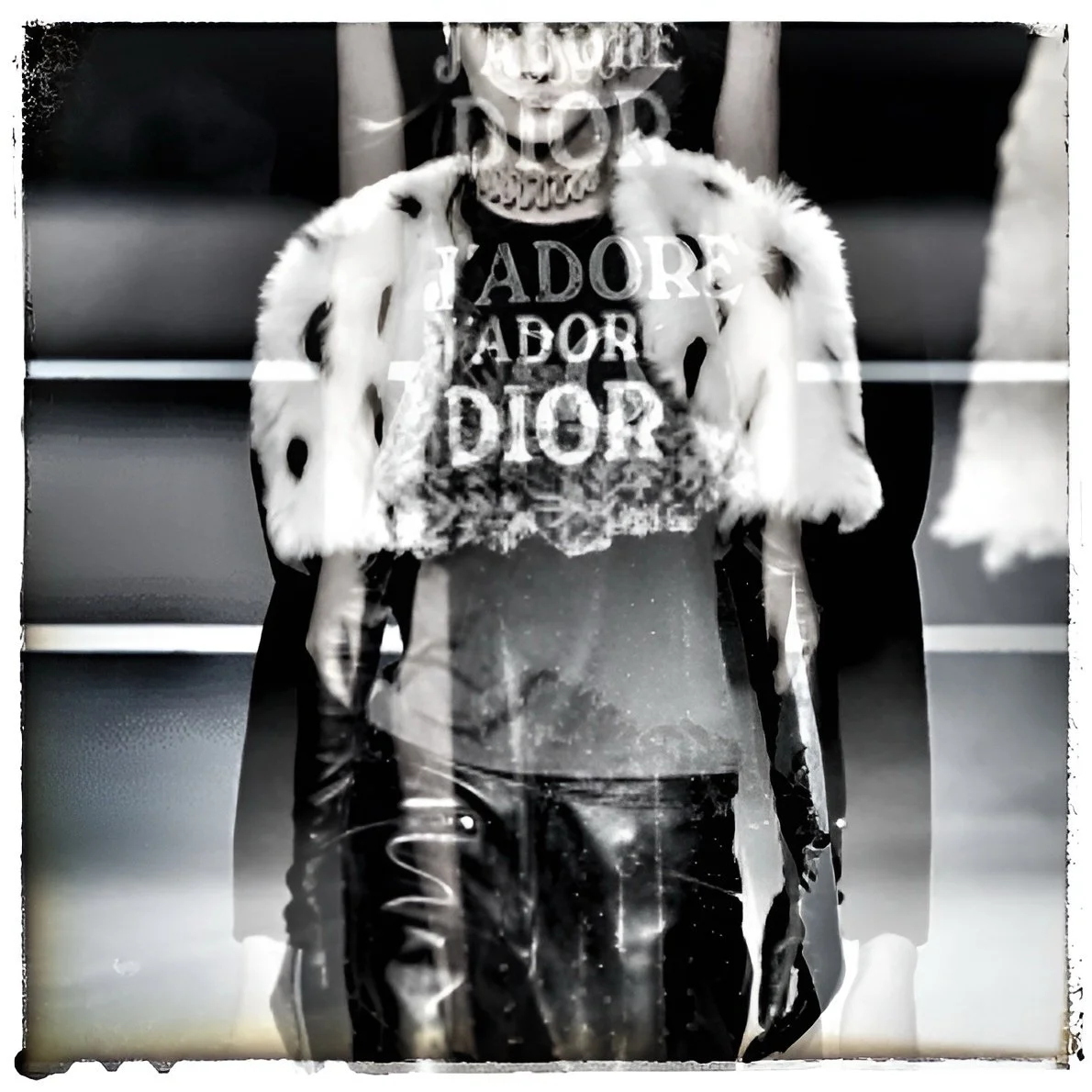The tension of Now: fashion at a crossroads
Women’s Fashion Week just wrapped up, and I couldn’t help but feel compelled to share some of the things it stirred in me. Beyond the beauty of the garments and the great amount of intense work, obviously, there were moments that really caught my eye and made me think. After all, fashion is a language, and it certainly spoke to me.
As we know, fashion has always been a reflection of its time - a mirror, a protest, an escape. But in 2025, it feels more like a quiet debate: a negotiation between aesthetics, identity, and power. What we wear has always said something about who we are, but in a world increasingly consumed by war, political extremism, and economic uncertainty, the question lingers: Does fashion still matter?
At first glance, the answer seems obvious. When borders are redrawn by conflict and conservatism tightens its grip on personal freedoms, the spectacle of Fashion Week - the rotating carousel of trends, the relentless churn of newness - can feel, at best, irrelevant, and at worst, cynical.
This season´s runways in New York, London, Milan, and Paris revealed a fundamental tension: a tug-of-war between nostalgia and innovation, self-expression and social conformity, sustainability and an industry dependent on excess.
Androgyny took center stage, but not in the way we’ve envisioned. If gender fluidity is truly the future, why do we still have separate men´s and women’s Fashion Weeks? More than that, what we are seeing isn´t gender-inclusive fashion but a repackaging of masculinity - oversized tailoring, structured coats military-inspired silhouettes.
Technology dazzled in the form of LED-infused dresses and AI generated textiles, but can fashion´s embrace of innovation ever align with the sustainability it claims to champion? Even nostalgia - the industry’s favorite currency - felt uneasy. Dior´s re-release of the J´Adore Dior Tee played on Y2K sentimentality, but at what cost? How easily does fashion erase its own uncomfortable histories in the pursuit of the next big thing?
Fashion has the power to inspire, but it also holds the responsibility to evolve - to be part of the solution rather than just a decoration of problems. And in 2025, it feels like fashion should arrive at a crossroads. Does it continue to celebrate its excess and being reactionary, or does it become an agent for real, progressive, systemic change?
…or does it become an agent for real, progressive, and systemic change?
The Illusion of Androgyny
Androgyny, often touted as the symbol of inclusivity, has become a touchstone for what the industry perceives as a more fluid understanding of gender. However, true gender fluidity in fashion requires a deeper examination of how the industry continues to operate within the framework of gender separation - separate Men’s and Women’s Fashion Weeks, distinct sections in stores, and entrenched cultural norms about what is “masculine” or “feminine”.
The path to genuine progress in fashion means dismantling these binary systems and moving beyond the traditional confines of gendered categories altogether. A truly inclusive approach would merge the spectrum of masculinity and femininity, allowing for their complexity and fluidity to coexist without the need for strict, predetermined boundaries. Fashion should provide a space where gender is not simply neutralized or flipped, but integrated into a shared, diverse expression that reflects the full range of human identity.
Judith Butler´s theory of gender performativity challenges the notion that gender is an inherent or biological trait. Rather, it is something that is enacted - an ongoing performance shaped by societal expectations. If we apply this lens to fashion, we must ask whether today’s so-called androgynous trends are really liberating - or simply reinforcing the power structures they claim to challenge. When women wear oversized suits or adopt militaristic aesthetics, it is seen as contemporary and progressive. But when men adopt traditionally feminine styles - why does it still feel like a rare, almost taboo, exception? True gender fluidity would embrace the multiplicity of expression on all sides - don´t you think? - allowing for the freedom to play with both masculinity and femininity, without forcing either into predetermined molds.
LED Dresses and AI Textiles: Innovation or Regressive Consumption?
Technology´s growing role in fashion is undeniable. LED-infused dresses, AI-generated patterns, and textiles that react to body heat suggest a future where clothing is no longer static but dynamic - shifting, glowing, and evolving in real time. This season’s runways were a testament to that vision: garments pulsating with light, fabrics transforming at the touch of a button, couture that feels less like fashion and more like performance art.
It is undeniably captivating. But beneath the spectacle, a question lingers - are these technological innovations truly reshaping fashion, or are they simply another iteration of excess, wrapped in the allure of progress? The industry has long mistaken novelty for transformation, mistaking the thrill of the new for meaningful change. And now, with garments embedded with microchips, conductive fibers, and non-biodegradable polymers, we have to ask: Are we creating a more intelligent future, or just a more complex waste problem?
Unlike natural fibers that decompose, many of these tech-infused materials resist breakdown
Unlike natural fibers that decompose, many of these tech-infused materials resist breakdown, introducing a new dilemma - what happens when fashion merges with planned obsolescence on a digital scale? The industry has only just begun reckoning with the environmental cost of fast fashion or fashion itself, yet already, we are on the precipice of a new frontier of waste, where yesterday’s luminous runway moment becomes tomorrow´s discarded circuitry.
Of course, there are designers pushing for a more thoughtful integration of technology - biodegradable circuits, solar-powered fabrics, garments that serve not only aesthetic functions but practical ones: self-heating coats, textiles that adjust to temperature, clothing that enhances visibility without additional accessories. These innovations hint at a future where technology isn´t just an embellishment but a solution.
Yet, for all its promise, tech-driven fashion remains, for now, more spectacle than substance - a striking vision, but one that does not yet address fashion´s deeper structural issues. The question is not just how far technology can take fashion, but whether fashion can evolve into something that transcends overconsumption. The true potential of innovation in fashion lies not in its dazzling effects, but in its ability to contribute to a more sustainable and responsible future.
AI-aided design, for instance, is not necessarily bad. It offers the possibility of streamlining the creative process while reducing waste and energy. By using algorithms to predict demand and optimize production, AI can help minimize overproduction - one of fashion´s greatest environmental issues. While we can´t ignore the challenges posed by tech-driven fashion, its responsible use could offer a more sustainable path forward, where innovation doesn´t just dazzle, but also fosters lasting change.
Nostalgia and Fashion´s Selective Memory (original pictures used for the collage: Daniele Oberrauch)
Nostalgia and Fashion’s Selective Memory
Another observation about Women’s Fashion Week: Dior´s recent re-release of the J´Adore Dior T-shirt - an iconic piece that taps - seemingly harmless - into the Y2K era. Originally designed in the early 2000´s under John Galliano, the shirt is tied to an era of theatrical excess and provocation. Galliano´s work was brilliant, his vision unparalleled. The T-shirt, in its original context, wasn´t just a logo; it was a statement, a reflection of a time when fashion embraced fantasy and rebellion in equal measure.
But history doesn´t exist in isolation. Galliano´s departure in 2011, following his widely condemned antisemitic and racist remarks, marked a turning point for Dior. The house´s decision to sever ties wasn’t just about public image; it aligned with its deeper heritage. Catherine Dior, Christian´s sister, was a member of the French Resistance, imprisoned in Ravensbrück for her fight against fascism. The Dior name carries with it not just glamour, but a legacy of defiance against the ideologies Galliano´s actions evoked.
Which is what makes this re-release, in this moment, appear almost cynical. It feels almost deliberate in its detachment. At a time when political conservatism and rising authoritarianism are reshaping culture, why resurrect a relic of Galliano´s era - one that, for all its brilliance, remains shadowed by his past? To celebrate the aesthetic of that time while sidestepping the complexities of its history is not just a question of taste, but of intention.
The J´Adore Dior Tee is undeniably iconic. Galliano´s work was extraordinary. But timing is everything - and in this case, the reissue feels misaligned not only with the current moment but with Dior´s own legacy. This is a house whose history is rooted in resistance, in defying the forces Galliano´s actions once evoked. To overlook that now, in a time when reactionary forces are gaining momentum, is more than an oversight; it is a contradiction. Fashion has always played with history - but some moments demand more reflection and responsibility than shallow reinvention or remake.
Maximalism: Bold Rebellion or Reckless Indulgence?
So now, let´s talk about maximalism - the other major statement we saw on the runways. After years of quiet luxury reigning supreme, fashion has once again swung toward the loud, the bold, the unapologetically excessive. Prints clashed, colors screamed, textures piled on top of each other in a glorious rebellion against restraint. And honestly? It is fun to see.
Maximalism, when done right, is an act of joy. It embraces playfulness, celebrates creativity, and refuses to be confined by the rigid rules of minimalism´s polished austerity. There is nothing wrong with a riot of prints, a shock of color, or a silhouette that demands attention. Fashion should provoke thought, but it is equally entitled to be playful. But maximalism without intention? That´s where things get really tricky.
Because let´s be honest: much of what we are seeing right now isn´t just about self-expression. It is about consumption. More, more, more - without a real sense of purpose. Logomania has crept back in, turning people into walking advertisements for brands that don’t need any more free publicity. There is nothing sophisticated about being a human billboard. Loudness, in itself, is not depth. And when fashion becomes about the spectacle of showing off - of wealth, of status, of trend-chasing - it stops being an expression of personal style and starts becoming just another way to chase the void.
What is even more troubling is the environmental cost. Maximalism, when done recklessly, often amplifies one of fashion´s greatest sins: overconsumption. Bold designs can easily slip into fading trends and, so, lead to overproduction, piling on layers of synthetic fabrics, unnecessary embellishments, and quick-to-dispose items. The result? More waste, more pollution, and a deeper hole to dig out of. In a world already drowning in textile waste, maximalism risks becoming a further catalyst for environmental collapse. Fashion´s love affair with excess - whether it is through volume, variety, or just plain waste - has never been more unsustainable.
The best kind of maximalism, then, isn´t about amassing more - it is about intention. It is about quality, creativity, and thoughtful indulgence, all while respecting the earth. When maximalism celebrates craftsmanship, artistry, and environmental responsibility, it can stand as a proud counterpoint to minimalism´s restraint. Or they even fall in love with each other…But without that, it risks becoming just another form of noise. And as we know, all that noise ultimately drowns out the things that matter most.
So, ELS plays it safe here and sticks to minimalism for now
The Future of Fashion: Smart, Responsible - But Still Fun
So, what did we learn from this season? Fashion is shifting. Technology is changing the game. And the old way of doing things - wasteful production, gendered categories, an obsession with the past disguised as nostalgia - is starting to crack under its own weight. And honestly? It is about time.
What does all this mean for a newcomer brand like ELS? Well…sustainability and innovation can (and should) work together. AI is not the enemy - it is a tool. Used right, it can be a force for good - cutting waste, conserving energy, and giving independent brands (like ELS) the tools to compete in an industry designed to favor the giants. It is not about replacing creativity; it is about making the process smarter, leaner, and, let´s be real, more financially feasible. And do we all need LED-covered garments and circuitry woven into our clothes? Not necessarily. But using technology to reduce environmental impact? That is a future we can get behind.
Maximalism is a fascinating challenge, and it must be approached wisely. The more prints, colors, and intricate details we include, the more chemicals are used in production, which only adds to the sustainability challenge. Bold designs can be fun, but they need to be executed with intention and control to ensure they don’t contribute to excess waste. The key is making sure that maximalism transcends mere spectacle and remains mindful of its environmental footprint - creating something timeless and intentional. So, ELS plays it safe here and sticks to minimalism for now, but when maximalism is done right, when it means something beyond spectacle, there is always room for collaboration.
And gendered clothing? It is hard to let go of what is familiar, and it can be valid, but for ELS it is outdated. Fashion should be about people, not categories. So, we don´t do womenswear or menswear - we do wear. The idea that self-expression should be confined to a binary is not just outdated; it is restrictive and limiting. Clothing should be a form of freedom, not a way to box people in. Fashion, at its core, should be political. It should challenge outdated norms and push boundaries. We are all human, and our garments should reflect that - rejecting borders, nationalism, and the systems that try to divide us. Fashion should unite us, not enforce artificial distinctions. So, let´s break down the walls. No boxes. No limits. Just freedom.
So finally…to answer the question - does fashion really matter? Absolutely. But it is time for the industry to grow up while keeping the inner child alive. Creating beautiful garments is no small feat - it is a tremendous amount of work and a great accomplishment that should be appreciated, regardless of taste. But as impressive as it is, it is simply not enough anymore. Fashion must take responsibility, evolve, and contribute to something greater than itself. Because if fashion is truly anything, it should be progressive, always moving toward a more inclusive, thoughtful future, don´t you think?
https://link.springer.com/article/10.1007/s43621-024-00624-5#Sec9
https://www.goodreads.com/book/show/85767.Gender_Trouble
https://www.goodreads.com/book/show/171257.Undoing_Gender
https://www.goodreads.com/book/show/127282429-who-s-afraid-of-gender




